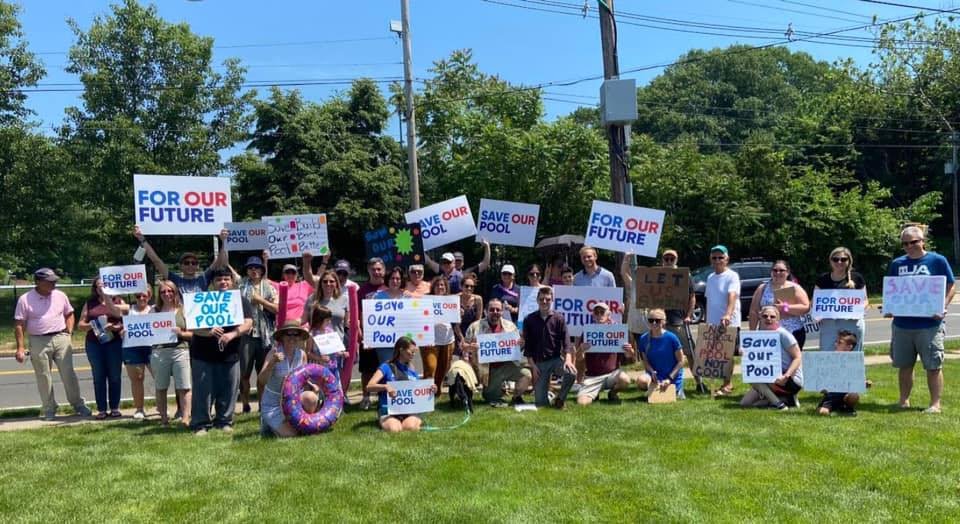
Community
The single greatest existential threat to the future of our town is population decline. This means fewer customers frequenting our local businesses, fewer residents to share the tax burden, and ultimately a greater strain being placed on each individual taxpayer. While you may have heard this is a state issue and not specific to Wallingford, that is misleading. It is true that Connecticut has experienced stagnant population growth over the past decade (relative to the rest of the country), but that stagnation is directly the result of people over the age of 55 leaving the state in retirement. Wallingford’s population, in comparison, is already experiencing significant decline rather than stagnation, and more specifically, that decline has occurred almost entirely in the 40-years-old-and-under demographic. In just the last ten years, Wallingford’s youth population has declined by 15%.
It cannot be understated: this trend threatens to plunge Wallingford’s very future into uncertainty. An exodus of older residents across the state certainly poses its own problems, but a rapid decline in the number young individuals and families poses a unique challenge for Wallingford. Any local economy needs a delicate balance of different generations participating to ensure stability and growth. Otherwise the entire tax base, comprised of residents of all ages, is put at risk. Beyond the basic economics, it is also important to acknowledge that these younger demographics literally represent the future of our town, and are therefore just as essential as any other generations when it comes to contributing to community building.
Unfortunately, the effects of this decline are already being felt. Decreasing school enrollment numbers (a more than 25% decline in our high schools over the last decade) are a driving factor in the Board of Eduction’s consideration of combining the two high schools into one. Fewer residents means a smaller future tax base, which in no uncertain terms means the tax burden for each individual in Wallingford is going to increase if things are not turned around soon. A smaller tax base means less money going to our schools, resulting in the continual decline of our school district, leading to fewer families wanting to move here, and this devastating feedback loop goes on and on.
In many ways, it should come as no real surprise that we are experiencing these trends in the first place. The current town administration has done nothing to incentivize young people or families to stay in Wallingford, let alone convince new people to move here, and it goes far beyond just our town government’s reluctance to adopt modern technological standards. Multiple businesses that primarily catered to young families have permanently shut their doors in recent years, and the inexcusable delay of ARPA relief funds by the current administration has only further sealed these businesses’ fates. In some cases, the current mayor has actively fought against measures that would help attract and retain these types of residents, and there is perhaps no better evidence than the modern day tragedy of what has become of Community Pool.
Once the largest cement pool in the country, Community Pool has been one of the town’s great public assets since it was first built in the 1950s. It provided a place for residents to beat the heat in the summer, functioned as a space for families to socialize, and offered good paying summer jobs to young people in town who were saving up for college (including employing a younger Riley O’Connell as a lifeguard). It was a centerpiece of our community. Unfortunately, decades of neglect and a lack of investment in maintenance has resulted in the dilapidated space we see today, one whose doors will never open again without a substantial rebuild. The public — and by extension Democrats on the Town Council — acted to save this pool with a proposal for a complete remodeling that would restore the community space beyond even its former glory, only to have this widely popular legislation vetoed by Mayor Dickinson. My opponent, Vincent Cervoni, not once but twice voted against overturning the mayor’s veto on the pool, sealing it’s fate. It’s also important to point out that Cervoni and Dickinson decided to pull the plug on this project AFTER nearly $500,000 of taxpayer money had already been spent on research and design, not before.
Unfortunately Community Pool has become representative of the general state of our public parks rather than the exception. As was made crystal clear with the resignations of every member of Wallingford’s Parks and Recreation Commission last fall, the condition of our parks has devolved from a point of immense frustration into a serious safety hazard. For years these dedicated volunteers tried desperately to address these issues, only to time and time again be stopped by the current administration. For a sad example of this, look no further than what happened to Doolittle Park, nearly burned to the ground after this Republican administration ignored publicly stated concerns and actively fought against the installation of security cameras that could have otherwise served as a deterrent. With each passing year, more would-be attractions for young families fall by the wayside with this administration at the wheel.
The 2023 election will be the ultimate referendum on our future. Do we want to slowly fade away as a town, or take serious actions now to ensure a stronger community in the years to come. Who better to attract young residents to town than a new mayor that fits that very demographic himself, someone who inherently has an eye to the future. The challenges ahead are steep, but Riley O’Connell still believes in Wallingford’s potential, and that our best days are yet to come.
